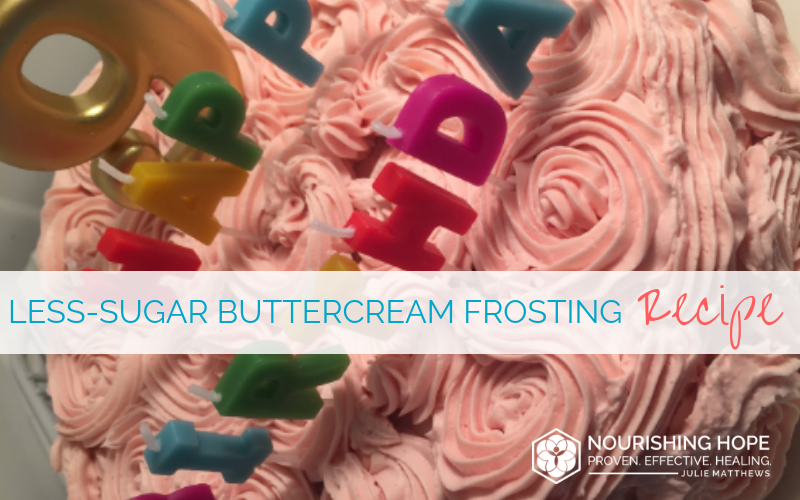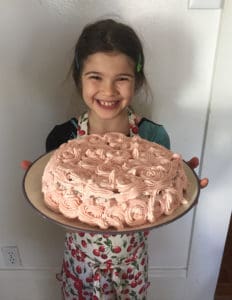
How time flies! 9 years ago, my daughter Ruby was born. Today, she’s baking her own birthday cakes. She loves cooking shows like Masterchef Junior and has been inspired to do her own cooking and baking. After watching the show, I realized how capable children can be at cooking, so I started letting her do everything herself, and I just supervise (and help out when she asks for it). Sometimes she cooks dinner and sometimes dessert. She even piped the frosting and decorated this cake ALL by herself!
 We’ve tried all different types of frosting over the years. She felt buttercream was too sweet, but stabilized whipped cream (what we used for her 6th birthday) was “too weird.” So we were on a hunt for a “less sweet” buttercream. And we found it! It’s a cooked buttercream.
We’ve tried all different types of frosting over the years. She felt buttercream was too sweet, but stabilized whipped cream (what we used for her 6th birthday) was “too weird.” So we were on a hunt for a “less sweet” buttercream. And we found it! It’s a cooked buttercream.
You heard that right… “cooked” buttercream. It’s normally made with flour, but we figured out how to make it gluten-free. Interestingly, it uses granulated sugar not powdered sugar, but it’s NOT gritty. I know it sounds strange but it’s absolutely delicious. Light and fluffy. Not too sweet. And pipes and holds its shape really well!!
We had to adapt the recipe to make it gluten-free, and it worked! Since the sweetener is dissolved in the milk and flour, I also wonder if I can make it GAPS/SCD with honey… and a different flour, maybe coconut flour. We are going to continue to play with this recipe. It’s so versatile. We are also going to try even less sugar next time.
Here’s our Gluten-Free Vanilla Cake recipe and our frosting recipe.
To make low salicylate, use white sugar, and make sure you tolerate the non-dairy milk and “butter” ingredients you are going to use.
Less-Sugar Buttercream Frosting
- ½ cup tapioca
- ½ teaspoon salt
- 1 ½ cups sugar
- 1 ½ cups non-dairy milk
- 2 teaspoons vanilla
- 1 ½ cups non-hydrogenated palm shortening and non-dairy butter (I use 3/4 cup of shortening and 3/4 cup Miyoko’s Organic Vegan Butter )
Prepare an ice water bath in a large bowl and set aside.
Make sure your shortening/non-dairy butter are room temperature.
Mix tapioca, salt, sugar in pot with milk, stir and begin to dissolve.
Cook on low heat until it begins to thicken, stirring continuously with a whisk. (It turns thick quickly, so watch closely, around 4 minutes). As soon as it begins to leave a trail with the whisk, pull off the heat. Quickly transfer to a bowl and place the bowl inside the ice water bath. If it’s pretty thick like glue, don’t worry it will still work.
Once the frosting reaches room temperature, transfer the mixture into a stand mixer, add the vanilla, and mix on medium while slowing adding the shortening/butter. Once the shortening/butter has been blended, put the speed to high and blend for 3 minutes. (Add any natural food coloring, as desired) Then transfer to the whisk attachment and whip for 30 seconds to 1 minute.
Once your cake is cool, you’re ready to frost. Watch the video below to watch Ruby practice decorating with rosettes.
12 servings
20 minutes



0 Comments